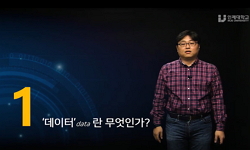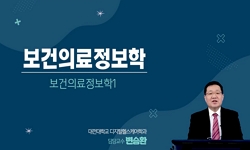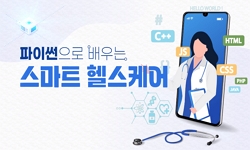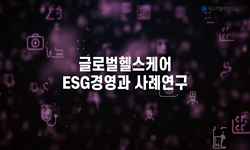최근 COVID-19 팬데믹 등 다양한 이유로 인해 바이오 헬스케어 시장이 전세계적으로 활성화되고 있다. 그 중, 생체정보 측정 및 분석 기술은 앞으로의 기술적 혁신성과 사회경제적 파급효과를 ...
http://chineseinput.net/에서 pinyin(병음)방식으로 중국어를 변환할 수 있습니다.
변환된 중국어를 복사하여 사용하시면 됩니다.
- 中文 을 입력하시려면 zhongwen을 입력하시고 space를누르시면됩니다.
- 北京 을 입력하시려면 beijing을 입력하시고 space를 누르시면 됩니다.


실시간 헬스케어 모니터링의 독립 구동을 위한 접촉대전 발전과 전자기 발전 원리의 융합 = Stand-alone Real-time Healthcare Monitoring Driven by Integration of Both Triboelectric and Electro-magnetic Effects
한글로보기https://www.riss.kr/link?id=A108034627
- 저자
- 발행기관
- 학술지명
- 권호사항
-
발행연도
2022
-
작성언어
-
- 주제어
-
등재정보
KCI등재,SCOPUS,ESCI
-
자료형태
학술저널
- 발행기관 URL
-
수록면
86-92(7쪽)
-
KCI 피인용횟수
0
- DOI식별코드
- 제공처
- 소장기관
-
0
상세조회 -
0
다운로드
부가정보
국문 초록 (Abstract)
최근 COVID-19 팬데믹 등 다양한 이유로 인해 바이오 헬스케어 시장이 전세계적으로 활성화되고 있다. 그 중, 생체정보 측정 및 분석 기술은 앞으로의 기술적 혁신성과 사회경제적 파급효과를 불러일으킬 것으로 예측된다. 기존의 시스템은 생체 신호를 받아 신호 처리를 하는 과정에서 신호 송×수신부, 운영체제, 센서, 그리고 인터페이스를 구동하기 위한 대용량 배터리를 필수적으로 요구한다. 하지만, 배터리 용량의 한계가 인해 시×공간적인 기기 사용의 제한을 야기하며, 이는 사용자의 헬스케어 모니터링에 필요한 데이터의 단절에 대한 원인으로 작용할 수 있으므로 헬스케어 디바이스의 큰 걸림돌 중의 하나이다. 본 연구에서는 생체정보 측정 장치에 접촉대전 효과(Triboelectric effects)와 전자기유도 효과(Electro-magnetic effects)를 융합하여, 외부 전원을 요구하지 않는 독립 구동이 가능한 시스템을 구성하여 시×공간적으로 사용 제한이 없는 소형 생체정보 측정 모듈을 설계 및 검증했다. 특히, 다양한 헬스케어 모니터링 중 족압 계측을 통해 사용자의 보행 습관 등을 파악할 수 있는 무선 족압 계측 모니터링 시스템을 검증했다. 보행 시 발생하는 접촉×분리 움직임에서 접촉대전 효과를 이용한 효과적인 압력 센서와 압력에 따른 전기적 출력신호를 통해 족압 센서를 만들고, 축전기를 이용한 신호처리 회로를 통해 이의 동적 거동을 계측할 수 있다. 또한, 출력된 전기신호의 무선 송×수신용 전원으로 사용하기 위해 전자기 유도 효과를 이용하여 보행 시 생기는 생체역학적 에너지를 전기에너지로 수확했다. 따라서, 이번 연구는 사용자가 제한적인 배터리 용량 때문에 생기는 충전에 대한 불편함을 줄일 수 있고, 뿐만 아니라 데이터 단절에 대한 문제점을 극복할 수 있
다국어 초록 (Multilingual Abstract)
Recently, the bio-healthcare market is enlarging worldwide due to various reasons such as the COVID-19 pandemic. Among them, biometric measurement and analysis technology are expected to bring about future technological innovation and socio-economic r...
Recently, the bio-healthcare market is enlarging worldwide due to various reasons such as the COVID-19 pandemic. Among them, biometric measurement and analysis technology are expected to bring about future technological innovation and socio-economic ripple effect. Existing systems require a large-capacity battery to drive signal processing, wireless transmission part, and an operating system in the process. However, due to the limitation of the battery capacity, it causes a spatio-temporal limitation on the use of the device. This limitation can act as a cause for the disconnection of data required for the user's health care monitoring, so it is one of the major obstacles of the health care device. In this study, we report the concept of a standalone healthcare monitoring module, which is based on both triboelectric effects and electromagnetic effects, by converting biomechanical energy into suitable electric energy. The proposed system can be operated independently without an external power source. In particular, the wireless foot pressure measurement monitoring system, which is rationally designed triboelectric sensor (TES), can recognize the user’s walking habits through foot pressure measurement. By applying the triboelectric effects to the contact-separation behavior that occurs during walking, an effective foot pressure sensor was made, the performance of the sensor was verified through an electrical output signal according to the pressure, and its dynamic behavior is measured through a signal processing circuit using a capacitor. In addition, the biomechanical energy dissipated during walking is harvested as electrical energy by using the electromagnetic induction effect to be used as a power source for wireless transmission and signal processing. Therefore, the proposed system has a great potential to reduce the inconvenience of charging caused by limited battery capacity and to overcome the problem of data disconnection.
참고문헌 (Reference)
1 Köse, T., "Reflections on the Pandemic in the Future of the World" 2020
2 Wu, C., "Keystroke Dynamics Enabled Authentication and Identification Using Triboelectric Nanogenerator Array" 21 (21): 216-222, 2018
3 Fan, F. -R., "Flexible Triboelectric Generator" 1 (1): 328-334, 2012
4 Nigg, B., "Effect of An Unstable Shoe Construction on Lower Extremity Gait Characteristics" 21 (21): 82-88, 2006
5 Joseph, K., "Design and Development of Micro-power Generating Device for Biomedical Applications of Lab-on-adisc" 10 (10): e0136519-, 2015
6 Wu, C., "A Spring-based Resonance Coupling for Hugely Enhancing the Performance of Triboelectric Nanogenerators for Harvesting Low-frequency Vibration Energy" 32 : 287-293, 2017
7 Beeby, S. P., "A Micro Electromagnetic Generator for Vibration Energy Harvesting" 17 (17): 1257-, 2007
8 Maharjan, P., "A Fully Functional Universal Self-chargeable Power Module for Portable/wearable Electronics and Selfpowered IoT Applications" 10 (10): 2002782-, 2020
1 Köse, T., "Reflections on the Pandemic in the Future of the World" 2020
2 Wu, C., "Keystroke Dynamics Enabled Authentication and Identification Using Triboelectric Nanogenerator Array" 21 (21): 216-222, 2018
3 Fan, F. -R., "Flexible Triboelectric Generator" 1 (1): 328-334, 2012
4 Nigg, B., "Effect of An Unstable Shoe Construction on Lower Extremity Gait Characteristics" 21 (21): 82-88, 2006
5 Joseph, K., "Design and Development of Micro-power Generating Device for Biomedical Applications of Lab-on-adisc" 10 (10): e0136519-, 2015
6 Wu, C., "A Spring-based Resonance Coupling for Hugely Enhancing the Performance of Triboelectric Nanogenerators for Harvesting Low-frequency Vibration Energy" 32 : 287-293, 2017
7 Beeby, S. P., "A Micro Electromagnetic Generator for Vibration Energy Harvesting" 17 (17): 1257-, 2007
8 Maharjan, P., "A Fully Functional Universal Self-chargeable Power Module for Portable/wearable Electronics and Selfpowered IoT Applications" 10 (10): 2002782-, 2020
동일학술지(권/호) 다른 논문
-
Polyaniline을 이용한 CNT fiber 유연 전극 기반의 비효소적 글루코스 검출
- 한국화학공학회
- 송민정 ( Min-jung Song )
- 2022
- KCI등재,SCOPUS,ESCI
-
PEMFC 고분자막의 어닐링 온도가 내구성에 미치는 영향
- 한국화학공학회
- 이미화 ( Mihwa Lee )
- 2022
- KCI등재,SCOPUS,ESCI
-
- 한국화학공학회
- 유동근 ( Donggeun Yoo )
- 2022
- KCI등재,SCOPUS,ESCI
-
고분자전해질 연료전지에서 고분자 막과 전극의 철 이온 오염 및 산 세척 효과
- 한국화학공학회
- 유동근 ( Donggeun Yoo )
- 2022
- KCI등재,SCOPUS,ESCI
분석정보
인용정보 인용지수 설명보기
학술지 이력
| 연월일 | 이력구분 | 이력상세 | 등재구분 |
|---|---|---|---|
| 2023 | 평가예정 | 해외DB학술지평가 신청대상 (해외등재 학술지 평가) | |
| 2020-01-01 | 평가 | 등재학술지 유지 (해외등재 학술지 평가) |  |
| 2013-01-01 | 평가 | 등재 1차 FAIL (등재유지) |  |
| 2010-12-02 | 학술지명변경 | 한글명 : 화학공학 -> Korean Chemical Engineering Research(HWAHAK KONGHAK) |  |
| 2010-01-01 | 평가 | 등재학술지 유지 (등재유지) |  |
| 2009-08-25 | 학술지명변경 | 외국어명 : Korean Chem. Eng. Res. -> Korean Chemical Engineering Research |  |
| 2008-01-01 | 평가 | 등재학술지 유지 (등재유지) |  |
| 2007-09-27 | 학회명변경 | 영문명 : The Korean Institute Of Chemical Engineers -> The Korean Institute of Chemical Engineers |  |
| 2006-01-01 | 평가 | 등재학술지 유지 (등재유지) |  |
| 2004-01-01 | 평가 | 등재학술지 유지 (등재유지) |  |
| 2001-07-01 | 평가 | 등재학술지 선정 (등재후보2차) |  |
| 1999-01-01 | 평가 | 등재후보학술지 선정 (신규평가) |  |
학술지 인용정보
| 기준연도 | WOS-KCI 통합IF(2년) | KCIF(2년) | KCIF(3년) |
|---|---|---|---|
| 2016 | 0.43 | 0.43 | 0.4 |
| KCIF(4년) | KCIF(5년) | 중심성지수(3년) | 즉시성지수 |
| 0.37 | 0.35 | 0.496 | 0.11 |





 ScienceON
ScienceON KISS
KISS







